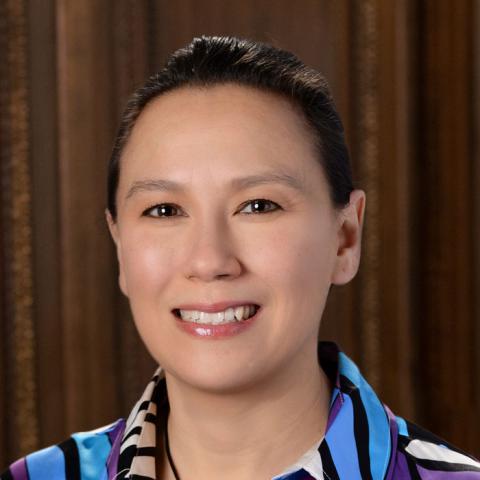Today is International Universal Health Coverage Day — the anniversary of the United Nations resolution, passed on December 12, 2012, which urged leaders worldwide to accelerate progress toward universal health insurance coverage. In September, leaders of all UN member states — including the United States — recommitted to achieving universal health coverage by 2030. All high-income countries other than the U.S. have adopted a system of universal coverage; many middle- and low-income countries are moving in this direction. In the U.S., the Affordable Care Act (ACA) expanded health coverage to millions of Americans, but approximately 30 million remain uninsured.
What can the U.S. learn from countries that have achieved this goal? We highlight three countries: Germany, the world’s first and oldest health insurance system; the Netherlands, one of the best-performing health systems; and Canada, our neighbor of equal geographic size.
Germany: Expanded One Population at a Time
The first modern, organized health care system was established by German Chancellor Otto van Bismarck in 1883. The “Bismarckian system” is a social insurance model that requires everyone to have insurance through so-called “sickness funds,” which are roughly equivalent to nonprofit health insurance companies.
Initially, coverage was limited to blue-collar workers, approximately 10 percent of the population. At the time, nearly 19,000 sickness funds provided free outpatient care and medications as well as cash benefits in the event of sickness, death, or childbirth.
Gradually, mandatory health insurance expanded to other populations and to other benefits. By 1914, coverage was mandatory for white-collar workers, agricultural workers, and domestic servants. Over the next several decades, mandatory coverage expanded to the unemployed, dependents, retirees, farmers, students, and artists. By 1987, nearly 90 percent of the population was covered. In 2007, Germany took the final step by passing a law that mandated health insurance for all residents.
Today, statutory health insurance covers 90 percent of the population, while the remaining 10 percent — higher-income earners and public servants — have private insurance.
The Netherlands: Three Systems Merged into One
During World War II, Germany occupied the Netherlands and installed a Bismarckian compulsory sickness fund system for lower-income employees, a voluntary health insurance system for the unemployed, and private health insurance for higher-income earners. In 1986, voluntary insurance was abolished, and the populations served — primarily older adults with greater health needs — were assigned to either the sickness funds or private health insurance.
It wasn’t until 2006 that the private insurance and compulsory sickness fund systems were consolidated into a single system. Today, the Netherlands requires all residents to purchase health insurance offered on a national exchange. Insurers must accept all applicants, with premiums the same for all enrollees regardless of age or health status.
Canada: Universal Coverage Began with One Pioneering Province
Canada also took an incremental approach. In 1947, Saskatchewan became the first province to introduce universal public health insurance for hospital and diagnostic services. British Columbia and Alberta followed after a few years, but it wasn’t until a decade later that the federal government passed a law that covered hospital services in all provinces.
Saskatchewan again led the way in 1962 by adding universal coverage for physician services to complement hospital coverage. A federal law to provide funding for these services followed; by 1972, all provinces had established comprehensive medical insurance.
Today, all Canadians are automatically covered by Medicare (the country’s publicly funded health care system), which comprises 13 provincial and territorial health plans. Canada’s Medicare does not cover outpatient prescription drugs, although each province provides some prescription drug coverage for children, elderly, and low-income populations. The federal government is currently debating whether and how to add outpatient prescription drugs as a national benefit.
United States: Moving Toward Universal Coverage
The United States has made several attempts at national health reform, dating back to the early 1900s. At each step, coverage has been expanded incrementally by population, income level, and geography. During World War II, employer-sponsored health insurance gained popularity because the government imposed wage controls, while the cost of providing health insurance as a fringe benefit to employees did not count as taxable income. As a result of this important tax benefit, employer-based benefits now constitute the largest source of health coverage. The passage of Medicare and Medicaid in 1965 to cover the elderly, disabled, and certain categories of low-income populations represented a significant expansion in government-provided health coverage.
The ACA aimed for near-universal coverage in the U.S. by building on our existing public and private insurance systems. The law expanded eligibility for Medicaid, reformed the individual insurance market, and provided subsidies for middle-income families. These changes made it possible for low- and moderate-income families and people with preexisting health conditions to get comprehensive coverage. An estimated 20 million more Americans gained health coverage. Progress has stalled because of a lack of Medicaid expansion in 17 states, congressional and executive-branch actions, high premiums for people ineligible for subsidies, and the exclusion of undocumented immigrants from subsidized coverage. In addition, rising deductibles in private plans, including employer plans, have left an estimated 44 million underinsured.
What Is Next for the U.S.?
International Universal Health Coverage Day is an opportunity to reflect on the progress made to date in the U.S. — and to consider whether other countries offer lessons. All countries build their health care systems within the constraints of historical, cultural, and sociopolitical contexts; no two have taken the same path. The three countries featured here took decades to gradually expand their populations and services covered, eventually addressing fragmentation through consolidation. While the United States has not yet achieved universal coverage, history and lessons from our peers suggest the goal is within reach, certainly by the 2030 target set by the UN resolution.


